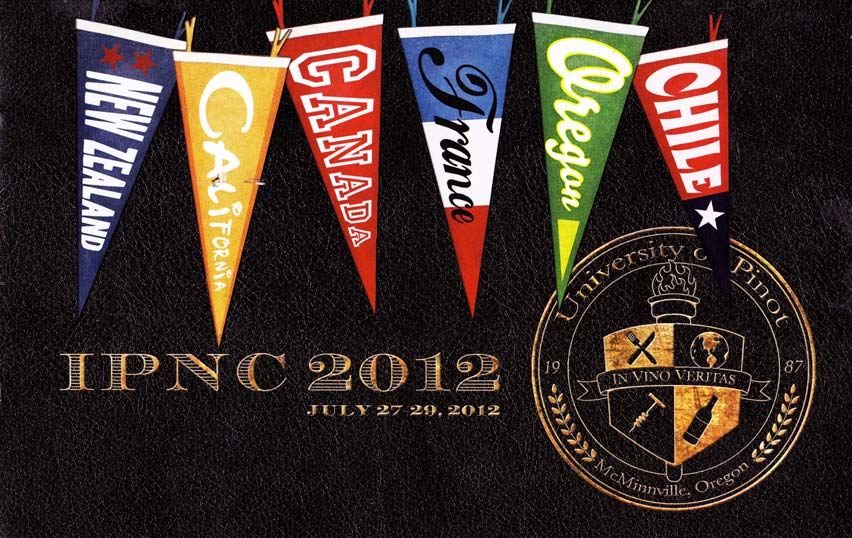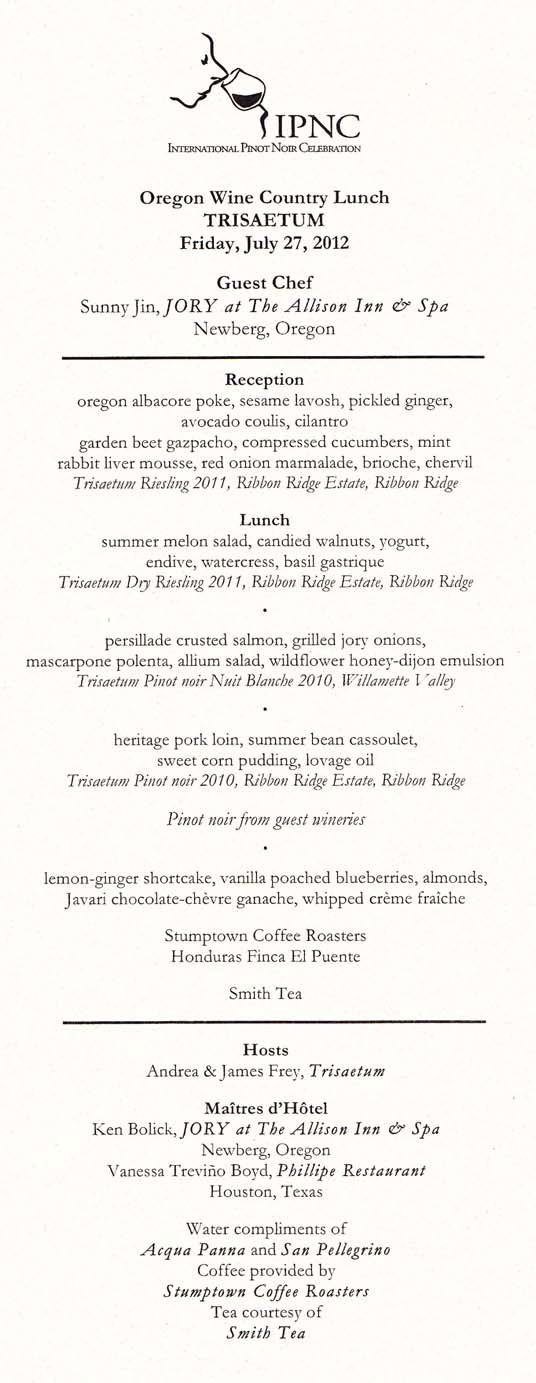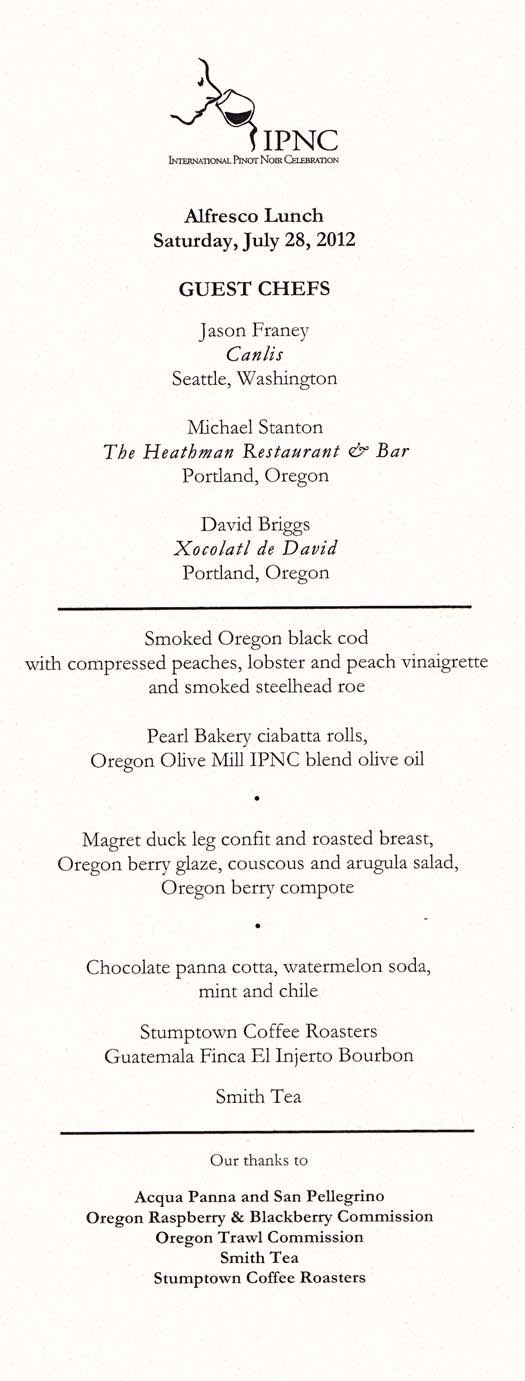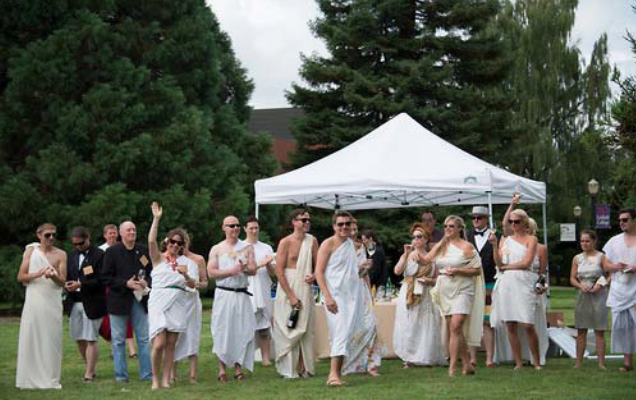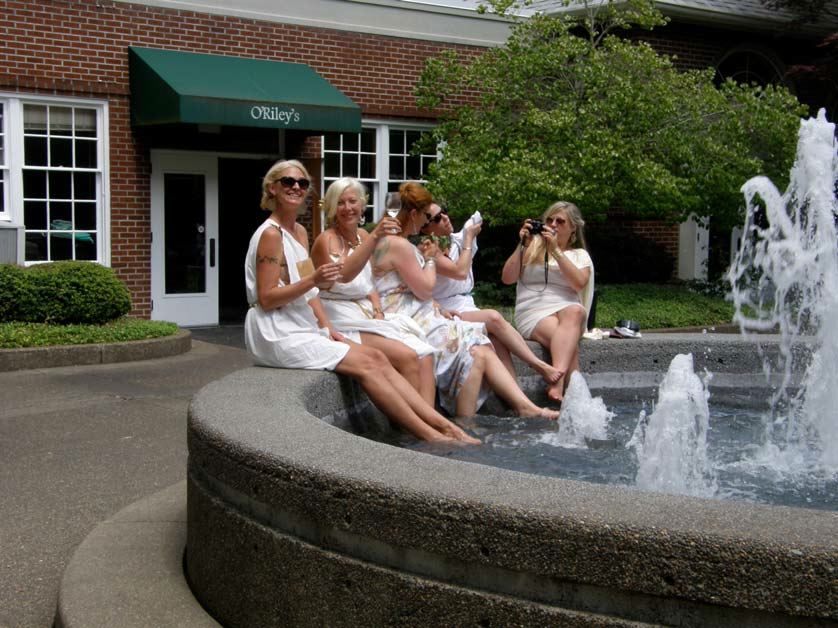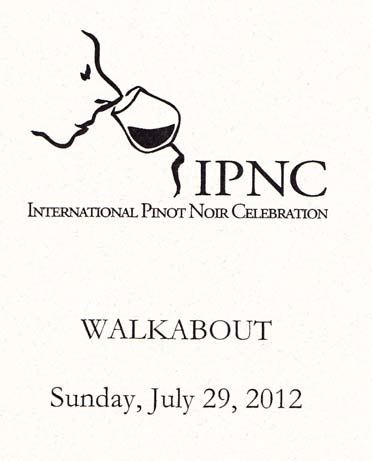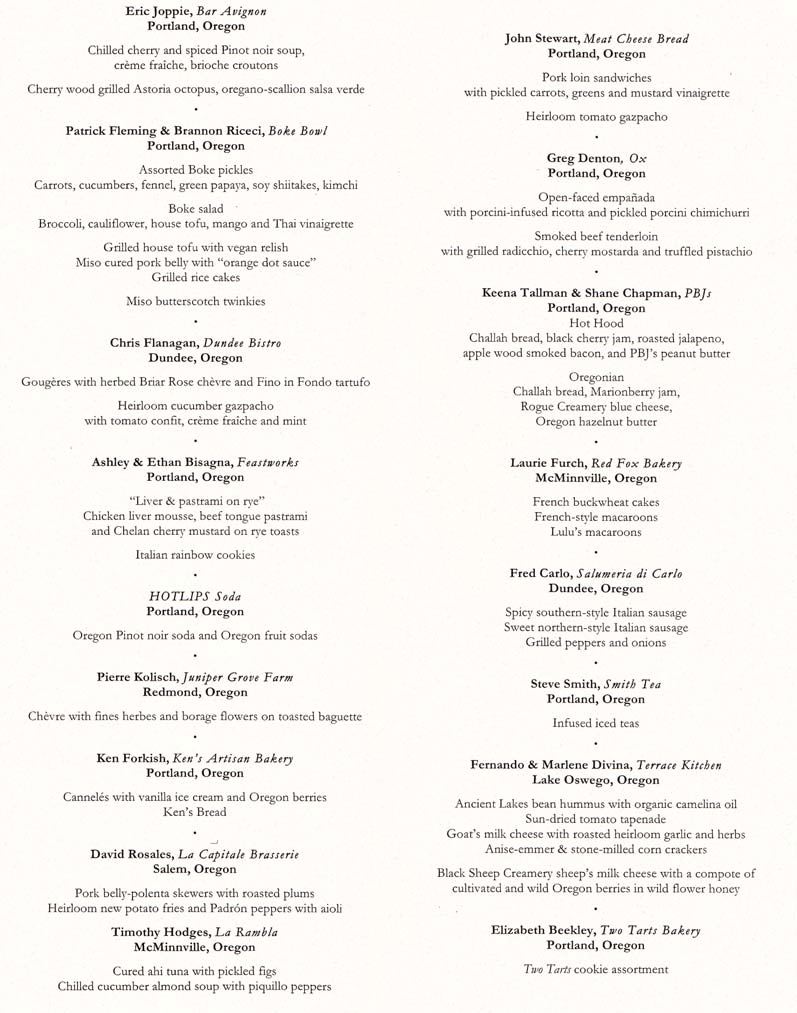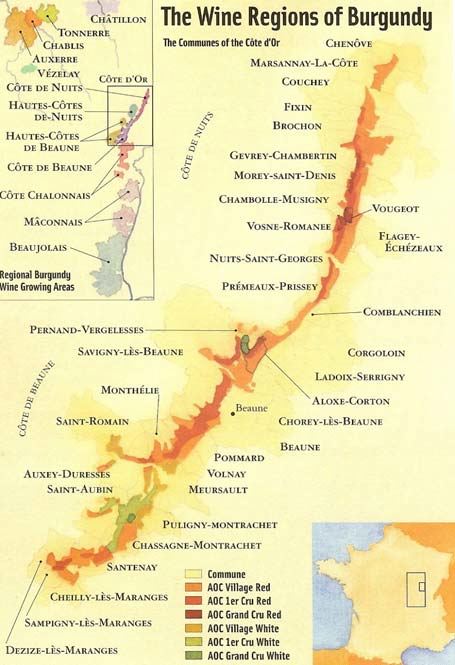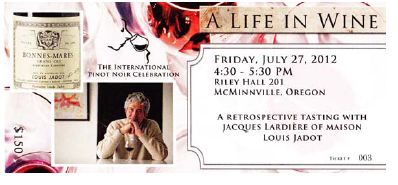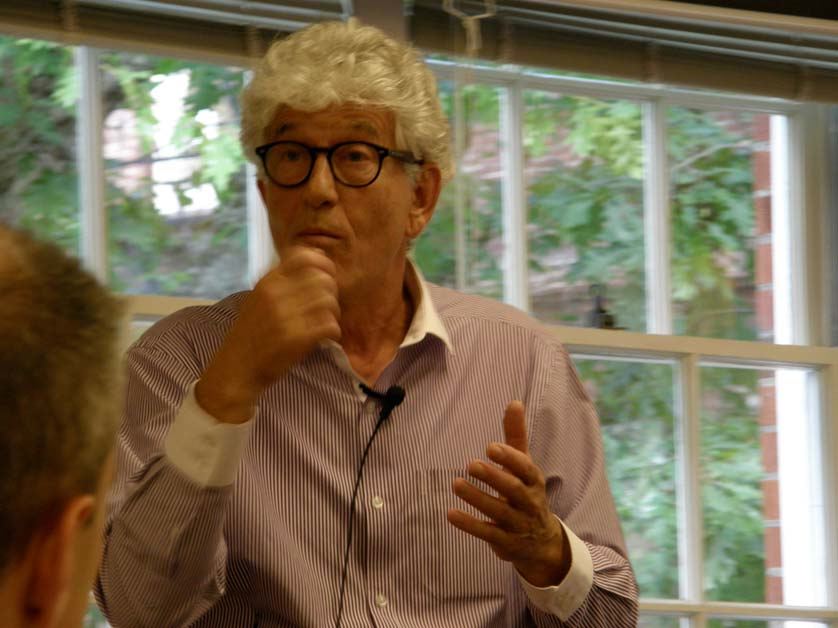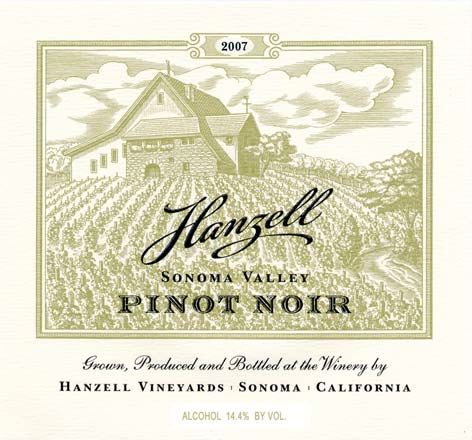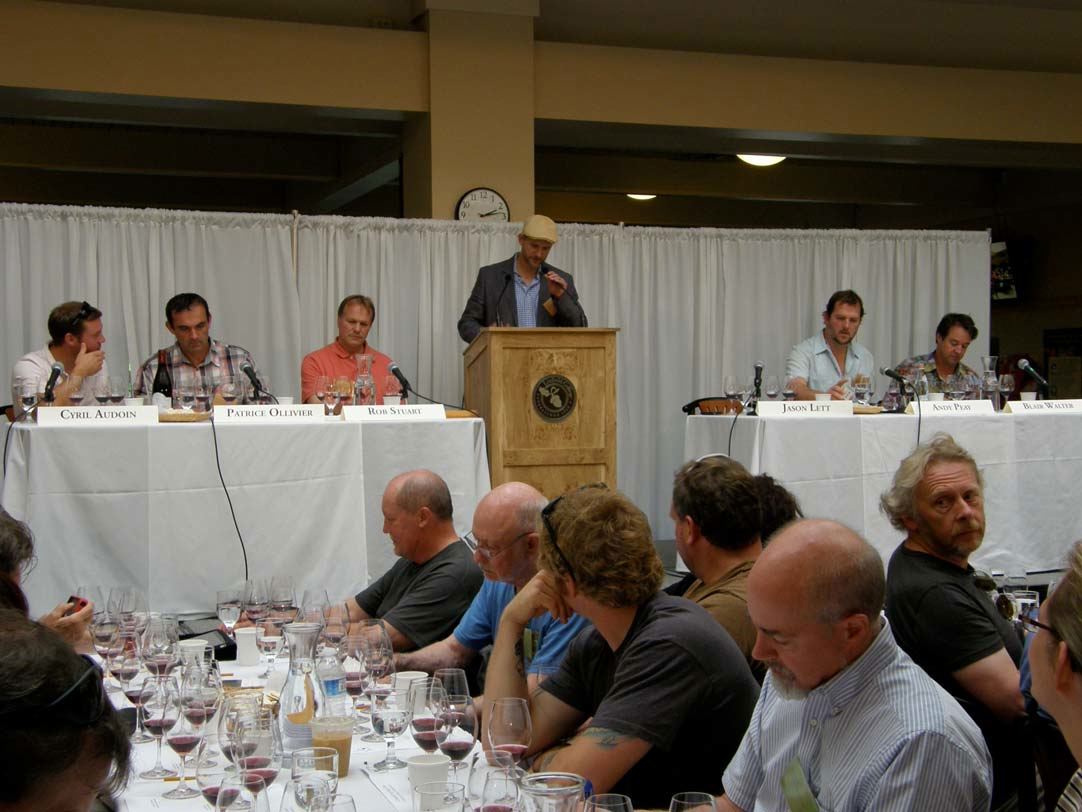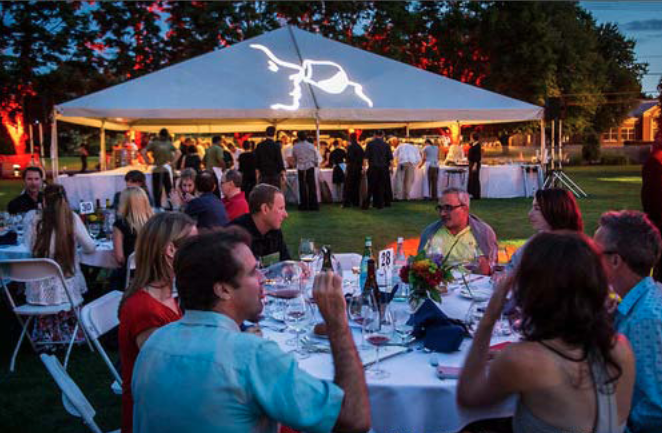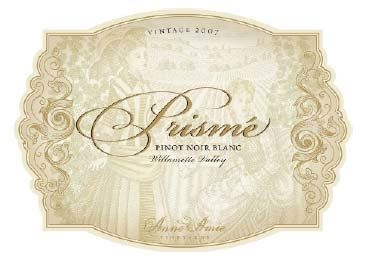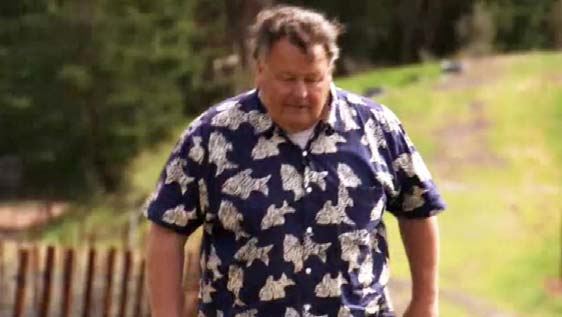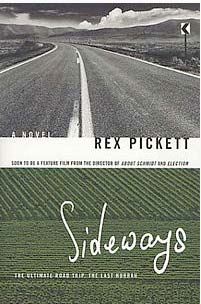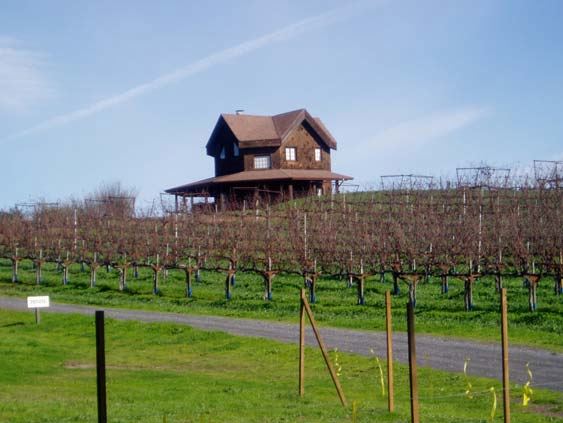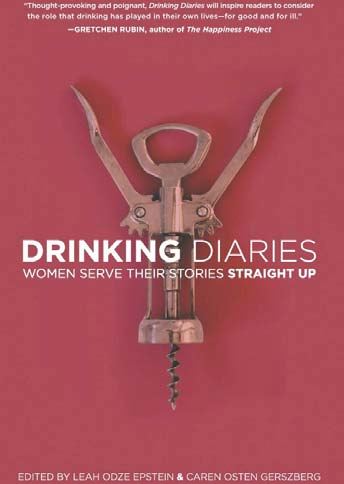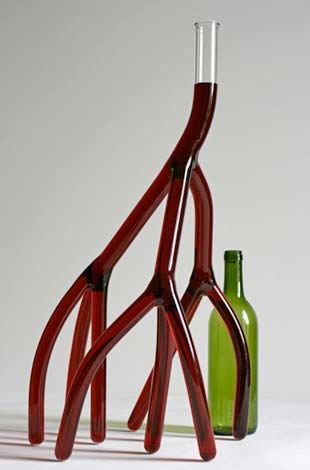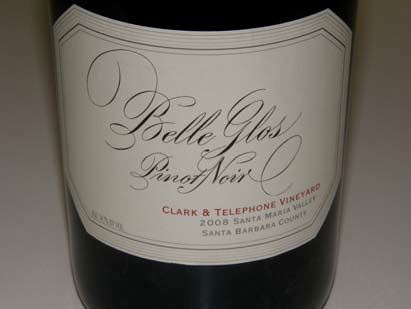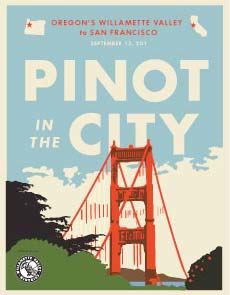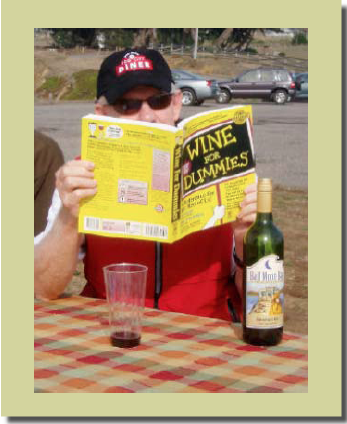IPNC 2012: Pinot Summer School in McMinnville, Oregon
I recently enrolled in the University of Pinot at the Twenty-Sixth Annual International Pinot Noir Celebration (IPNC) to obtain my continuing education in living well. Every year, a diverse group of attendees that includes
pinotphiles, gourmands, sommeliers, winemakers, winegrowers, winery owners, retailers, wine critics, and wine
writers converge on the campus of Linfield College in McMinnville, Oregon, fueled with an unabated spirit of
camaraderie, to revel together in their love for their “Go-Go Juice": Pinot Noir.
The first IPNC was held in 1987 when a group of Oregon winegrowers and winemakers gathered to figure out a
way to promote Oregon wine. Since then, the IPNC has brought over 14,000 wine lovers from around the
world to McMinnville. For 2012, approximately 700 attendees were registered and another 550 guests
attended the IPNC’s Sunday afternoon Walkabout at the end of the weekend.
IPNC has hosted 190 winemakers from France, 39 from New Zealand, 19 from Australia, and several from
Italy, Germany, Switzerland, Canada, Chile, Austria, and South Africa, and one each from Argentina, England,
Israel and Spain for a total of 302 foreign wineries. The emphasis is always on quality (wineries must submit
their wines for acceptance) and stylistic diversity, with many new winery faces appearing each year. Some of
this year’s winemakers included (pictured below upper left to lower right): Erin Nuccio (Evesham Wood), Ed
Kurtzman (Freeman Vineyards & Winery), Michael McNeil (Hanzell Vineyards), Tony Rynders (Cornerstone
Oregon), Byron Kosuge (B. Kosuge Wines), Elizabeth Grant-Douglas (La Crema), Blair Walter (Felton Road,
New Zealand), Rollin Soles (ROCO), Caroll Kemp and Peter Willmert (Red Car Vineyards), Laurent Montalieu
(Hyland Estates), Byron Dooley (Luminous Hills), Michael Richmond and Andrew Brooks (Bouchaine
Vineyards), Thomas Houseman (Anne Amie) and Alexandrine Roy (Domaine Marc Roy, Burgundy).

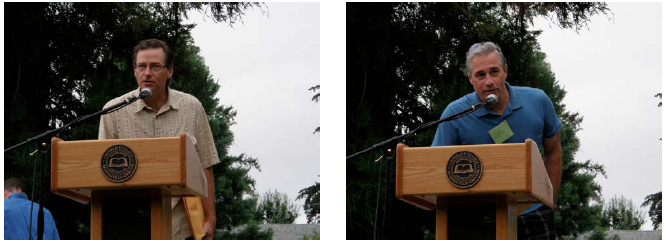
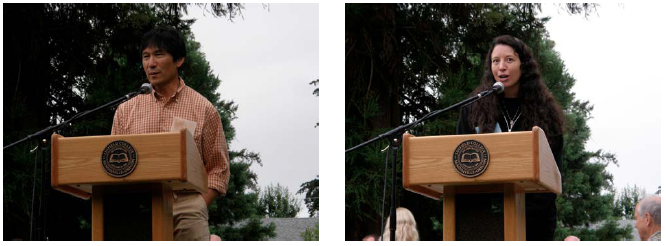
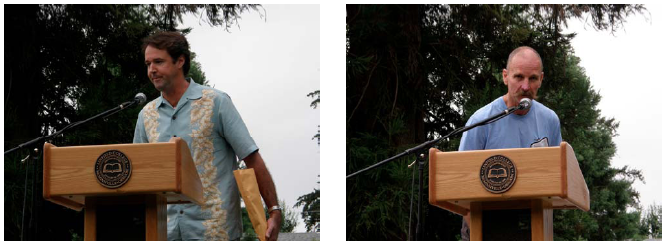
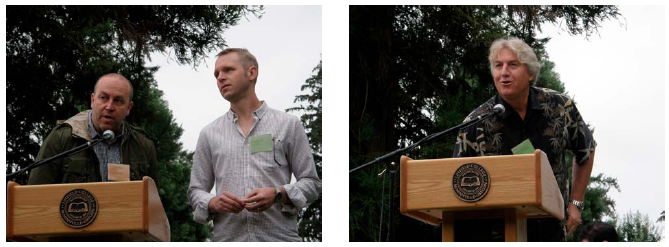
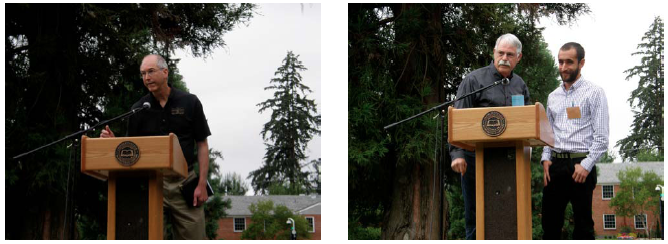
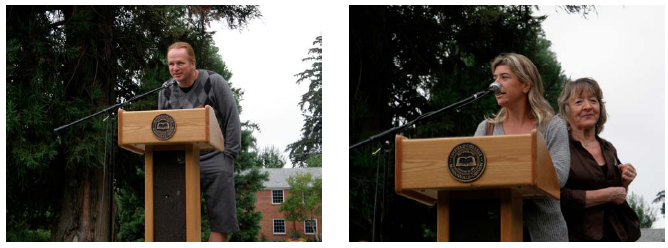
There is no judging of wines at IPNC. It is a pure celebration of Pinot Noir, offering the Pinot Noir enthusiast
the opportunity to discover new producers and rub shoulders with established winemakers of repute that they
may have only read about. Winemakers, winegrowers, winery owners, and winery representatives as a group
outnumber consumers. A full listing of the participants which included wineries from Oregon (36), California
(16), Burgundy (10), New Zealand (5), Canada (1), and Chile (1), is on the IPNC website at www.ipnc.org.
The IPNC is truly unique among Pinot Noir festivals in that the food rivals the wine. The meals are creative,
original, fresh, and made with local artisan farm-to-table ingredients. The Northwest is blessed with a group of
outstanding chefs and 72 of them participated as Featured Chefs along with an extensive kitchen support
team. Menus from the on-campus Alfresco Lunch and the Wine Country Lunch at Trisaetum Winery &
Vineyards that I attended are below:
There were 38 maîtres d’hôtel pouring wines, which flowed like water throughout the event. My approximate
tally at the end of IPNC indicated I had sampled 216 Pinot Noirs and 256 wines in total over the course of the
three day event.
Traditionally, the sommeliers are dressed in formal attire during the event, but on Sunday they put their
inhibitions aside and dress crazily for the morning brunch. This year, the theme was Roman togas:
Photo by Andrea Johnson
When the event concluded on Sunday, the sommeliers were able to finally relax and frolic:
The highlights of the IPNC seminars that I attended will be presented in the next section. A number of other
activities add to the joie de vivre of IPNC. Each day begins with Breakfast on the Patio where Oregon’s
legendary raspberries, blackberries, marionberries and blueberries are served along with decadent pastries
and a number of savory items. Coffee and coffee drinks are poured all day long by Stumptown Coffee
Roasters.
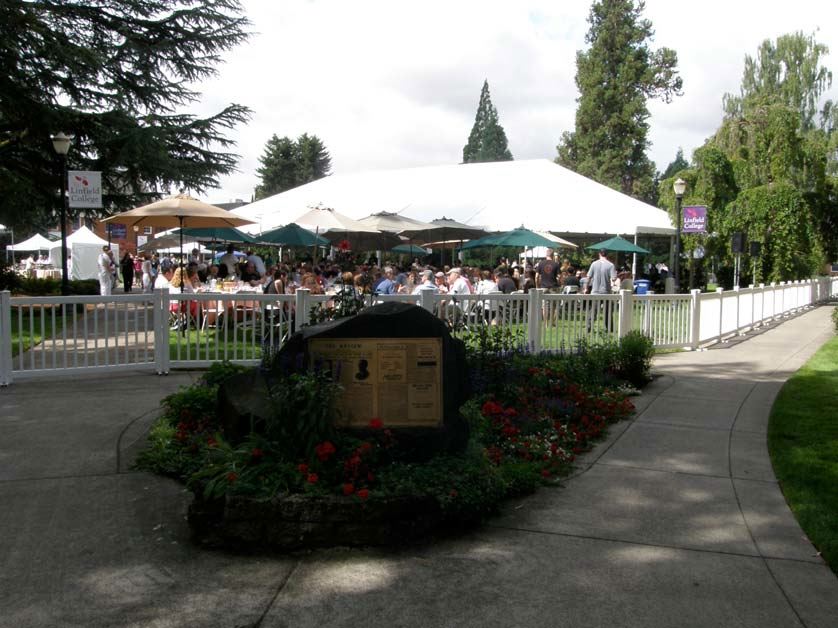
Each attendee enjoys a Vineyard Tour and Winery Lunch at assigned wineries. After a bus ride through the
countryside, guests are given a tour of the vineyard and winery, shown a short video of the winemaker’s steps
during harvest, offered insight into the winemaking techniques of several participating winemakers, followed by
a tasting of an array of wines paired with a multi-course meal crafted by one of the event’s guest chefs (see
lunch menu above). I attended the tour and lunch at Trisaetum Winery & Vineyards in the Ribbon Ridge
appellation of the Willamette Valley.
Orange County, California transplants, Andrea and James Frey, acquired a cattle ranch in the foothills of the
Coast Range outside McMinnville in 2003. Two years later, they planted 22 acres of Pinot Noir and Riesling.
They subsequently added another 28 acres of Pinot Noir and Riesling near Newberg on Ribbon Ridge near
neighbors Beaux Frères and Brick House. They built a magnificent winery, dramatically lit underground barrel storage
caves, and a 1,500-square-foot gallery to display James’ artwork. They named their winery Trisaetum,
a Latinized version of the names of their son, Tristan, and daughter, Tatum. The winery offers six bottlings of
Pinot Noir and six different Rieslings, vinified by James and co-winemaker Greg McClellan. James is shown in
the photo below discussing the soils at Trisaetum vineyards. The winery’s website is www.trisaetum.com.
Pinot Noirs at the lunch:
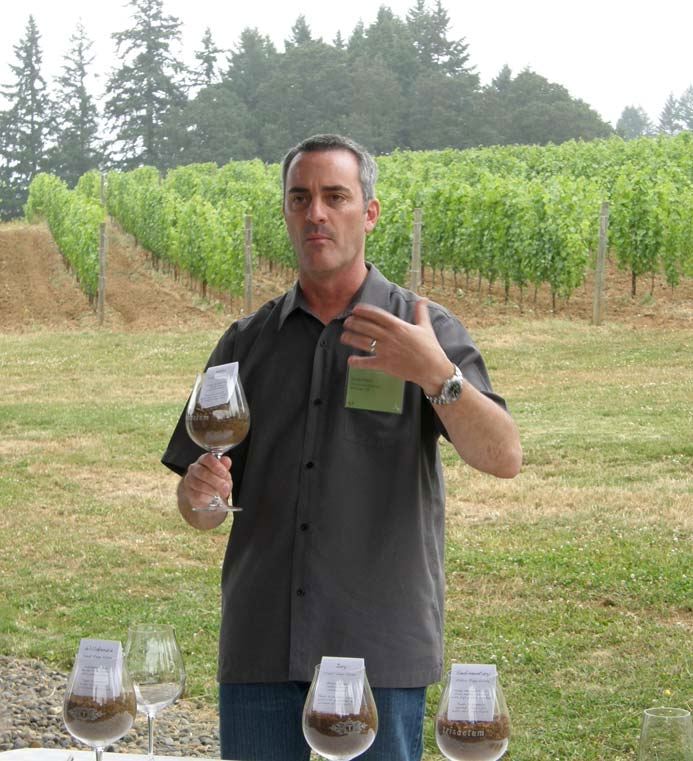
2010 Trisaetum Coast Range Estate Pinot Noir
13.2% alc., 300 cases, $55.
·
Opens reluctantly in the glass
revealing shy fruit and a green, oaky edge. Lean flavors of strawberries and cherries backed by very bright
acidity. The fruit-driven finish drops off quickly, leaving a healthy cut of acidity in its wake. Lacks ripeness and
concentration. Decent.
2010 Cornerstone Willamette Valley Pinot Noir
Unreleased. Five vineyard sources. Vinified by Tony
Rynders.
·
Pleasingly fruity on the nose, featuring red and blue fruits on the palate with a good grip of spice.
Plenty to like here because of the wine’s appealing finesse, balance, and length of finish. A classic cool climate
Pinot Noir. Very good.
2009 Robert Sinskey Three Amigos Vineyard Carneros Pinot Noir
13.5% alc., $38. Planted over 29 years
ago with heirloom selections and French clones.
·
Appealing perfume of ripe, dark red berries, fading a bit over
time in the glass, revealing a whiff of heat. Intense and full-bodied on the palate with notes of earth and
mushroom, and possessing impressive finishing power. A little sweet, finishing with a bit of warmth. Good.
2007 Boedecker Cellars Carlton Hill Vineyard Pinot Noir
Spent 20 months in seasoned oak and racked into
neutral barrels and aged off the lees for another 9 months.
·
Very pretty nose offering scents of fresh dark red
raspberries and strawberries with a hint of tobacco. Very soft in the mouth, with delicious flavors of plum and
berries, lifted by bright acidity. The 2007 vintage was very underrated in Oregon and many wines, such as this
one, are great now. Very good.
Alfresco Tastings are held Friday and Saturday in the late afternoon and this year offered Pinot Noir from the
2009 and 2010 vintages. This is an opportunity to meet favorite winemakers, discuss vintages, and renew old
friendships. Some wines that stood out for me will be presented later in this issue.
The Saturday night Northwest Salmon Bake is a long-standing tradition at IPNC, and has been called, “The
most entertaining meal at any wine event in the world.” Over 1,000 people attended this year. Held in a
lantern-lit oak grove on the Linfield College campus, wild salmon is cooked native northwest style on wood
stakes over a 60’ by 15’ fire pit fueled by fir and alder. Many volunteers from the Depoe Bay Chamber of
Commerce cook the succulent Neah Bay Chinook salmon for guests. A photo of the salmon cooking and the
extensive buffet menu follow. This is a no-holds-barred opportunity for pinotphiles to bring their best stuff to
share and as you wonder among the tables, it is remarkable to see the incredible array of wines, most of which
you can taste simply by asking.
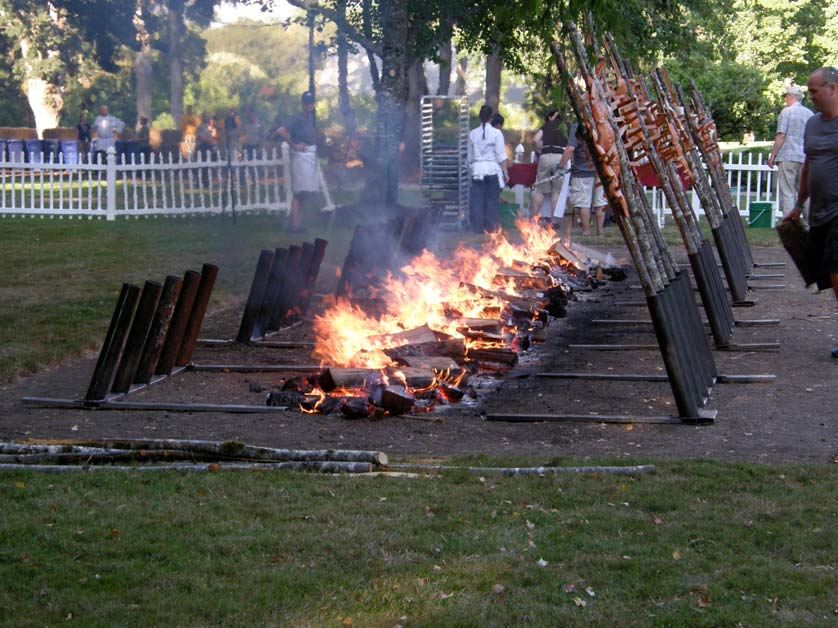
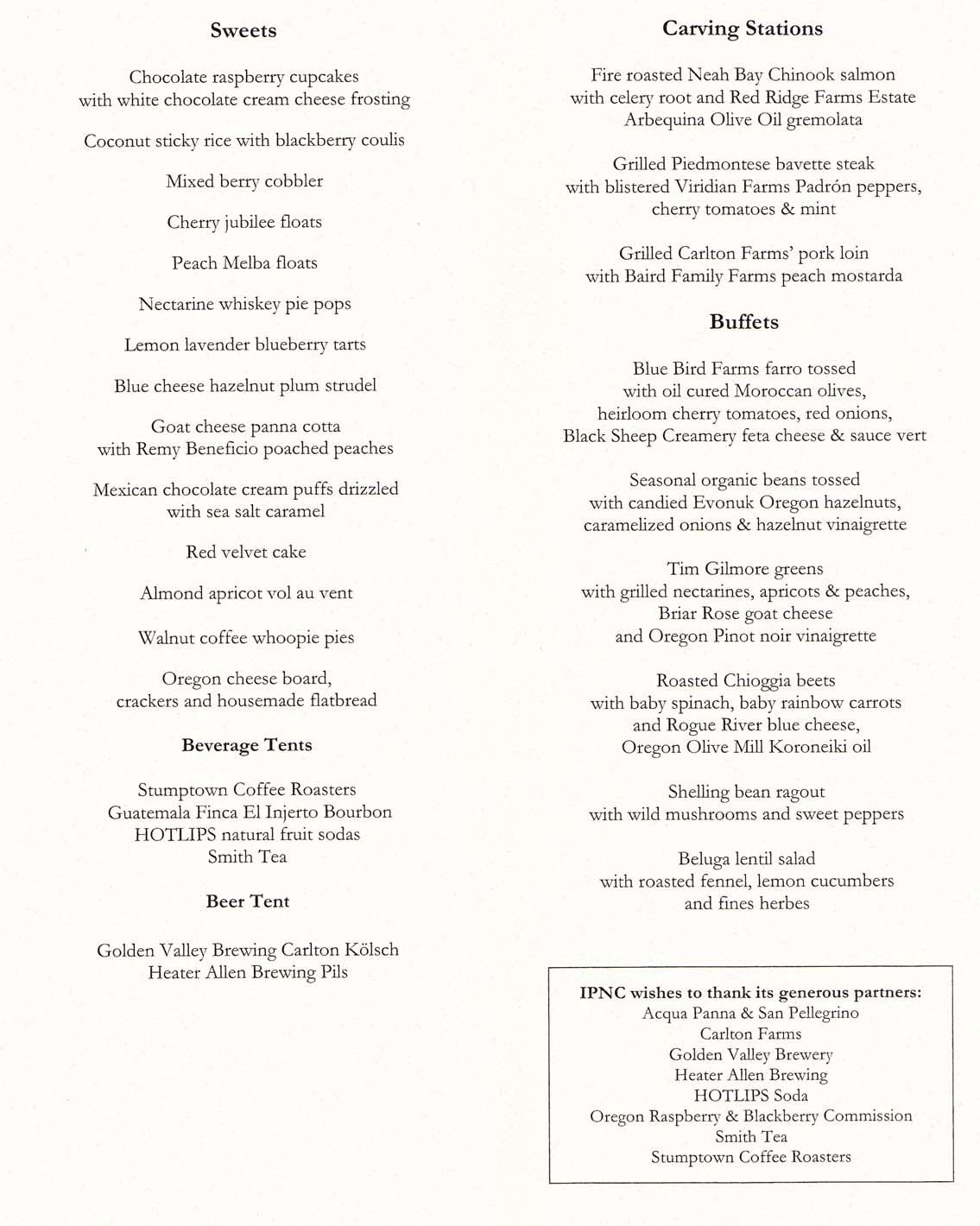
A featured afternoon activity was the screening of ‘A Year in Burgundy.’ The first-ever showing of the new
documentary film featured longtime IPNC friend Martine Saunier as the film’s guide. The filmmakers traveled
to Burgundy in each season of 2011 following the activities of seven of the region’s most respected winemaking
families including Domaine Leroy, Domaine Perrot-Minot, Domaine Morey-Coffinet, Domaine Brune Clavelier,
Domaine Mortet, Domaine Michel Gay & Fils, and Dominique Cornin. The filmmakers managed to capture the
crises and triumphs during the dramatic growing season of 2011; a year that went into the bottle and onto film.
The film is currently in post-production by Director/Producer David Kennard, with a 90-minute theatrical version
available in late 2012. Visit www.ayearinburgundy.com to view the trailer and for more information.
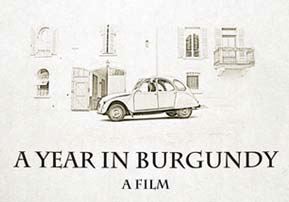
Oregon’s wine history is being documented at Linfield College as part of the Oregon Wine History Archive,
housed in the Jereld R. Nicholson Library. The Archive was given a recent boost by an $8,000 Cultural
Development Grant from the Oregon Cultural Trust. The Archive’s collection of photographs and documents
that trace the history of the Oregon wine industry and the International Pinot Noir Celebration, was open to
attendees at this year’s IPNC. In 2011, pioneers of the early Oregon wine industry committed their collections
to Linfield College. The archive contains materials from Adelsheim Vineyard, Erath Winery, The Eyrie
Vineyards, Ponzi Vineyards, Amity Vineyards, Sokol Blosser Winery and Weber Vineyard. For more
information, visit www.linfield.edu. Two archival photos are below. The first photo taken in 1970 is Dick Ponzi
and daughter Luisa, who is the current winemaker at Ponzi Vineyards, and the second photo taken in 1983 is
of a group of Yamhill County winemakers. How many can you identify?

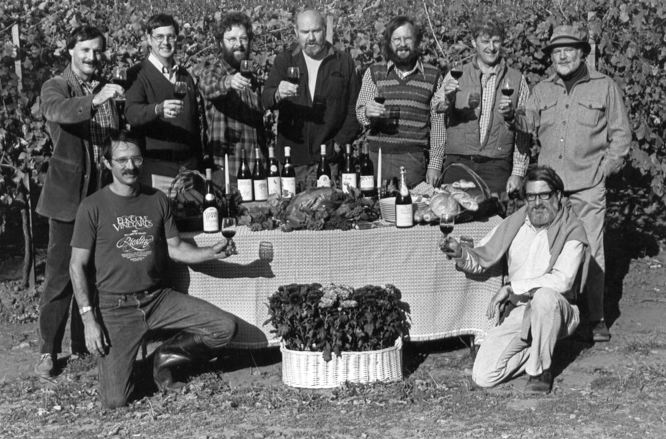
The Sunday afternoon Walkabout is not part of the regular IPNC program but is very popular with the local
wine-loving community with upward of 500 consumers attending. It is a “pocket version” of the three-day IPNC
weekend and is Oregon’s largest outdoor tasting of domestic and international Pinot Noir. All 70 of the winery
participants from the regular three-day IPNC weekend pour their wines, with a split into two tasting sessions,
offering a break in the middle to introduce the winemakers. I often attend as I did this year because it offers a
chance to taste wines that I did not get to sample during the three-day regular IPNC event. The array of artisan
foods are a compliment to the Pinot Noirs as indicated by the menu on the next page:
Highlights of the Pinot University Seminars at IPNC
Grand Seminar: Study Abroad in Burgundy with Allen Meadows
Panelists
Bertrand Ambroise, Maison Ambroise
Grégory Gouges, Domaine Henri Gouges
Jacques Lardière, Maison Louis Jadot
Vincent & Phillipe Lécheneaut, Domaine Lécheneaut
Moderator Allen Meadows spoke about the history of Burgundy and how it evolved through the years to it’s
present state. He led a discussion with the vigneron panelists on a walk through the Côte de Nuits, specifically
the vineyards of Chambolle-Musigny, Echézeaux, Gevrey-Chambertin, and Nuits-Saint-Georges. I recorded
the seminar so look for it featured on a future Grape Radio show.
Allen is a captivating speaker, offering concise, well-worded and pertinent information, presented with a direct
eye to the audience, with no reliance on notes. His French-to-English translations are adept, accurate and
instant, a rare talent that keeps the seminar on track.
I highly recommend you listed to this seminar if you are at all interested or even knowledgeable about
Burgundy for there is much to learn. I have summarized a few salient points here.
* Burgundy is very small in acreage: only 25,000 acres total in the Côte d’Or, but containing a vast number of
vineyards and domaines. Allen spends about 6 months a year in Burgundy visiting about 300 domaines
which is barely 10% of the total number in the Côte d’Or.
* The Côte d’Or is a series of hills that vary greatly in exposure, drainage and soil type, and minor differences
make significant differences in the region’s vineyard hierarchy.
* Burgundy is incredibly complex, with over 1,600 different climats. Allen likens it to a Russian doll, where each
time a doll is opened, another one appears inside without end. He has been going to Burgundy for over 30
years, and each day he spends there, he learns at least ten new things. He admits that he will never know it
all.
* Burgundy is the way it is today because of four developments:
(1) Burgundy was developed by educated religious fanatics. The transparency of Pinot Noir caused the
monks to take notice of different terroirs, noting small differences among the various vineyards. They
interpreted this as a message from God and found it worthy of note and celebration. This is a very key
realization. Eventually the vineyards were thoroughly delimited or mapped out. Typically, soil changes
were observed in very short spaces that accounted for differences in the wines made from adjacent or
nearby vineyards.
(2) The Napoleonic Code established in 1884 dictated that all siblings would receive an equal share of
their parent’s estate. This led to a vast mosaic of vineyard holdings.
(3) Phylloxera and the railroads. Phylloxera wiped out the vineyards in Burgundy and the Burgundians
were stubborn initially, refusing to graft over their vines onto American rootstock. There was still a
demand for Burgundy and the négociants satisfied this demand by bringing in wine from Southern
France and Northern Africa via inexpensive railroad transportation and selling it fraudulently as
Burgundy. Southern France was less impacted by the devastation of phylloxera because they were
quick to graft over their vines onto American rootstock and thus became a ready source of large
amounts of wine. The négociants threatened the vineyard hierarchy in Burgundy and a civil war of
sorts broke out with small winegrowers. A revolt ensued led by notable Burgundians including Henri
Gouge and Marquis de’Angerville, who began selling their wines themselves. They were quickly
blackballed by the négociants. Slowly over the next 20 years, the notion became widespread in
Burgundy that the domaine owners must protect their wines from fraud: if the wine said Richebourg, it
had to contain Richebourg and nothing else.
(4) The AOC system was established in 1935. Very slowly Burgundians learned the art of elevage and
bottling. Négociants were victims of the oil crisis and reduced their purchase of significant amounts of
Burgundy. It then became a matter of “sink or swim” for Burgundy domaines. Commercial quality
bottlers appeared and eventually, by 1973, a large number of domaines bottled their wines at the
domaine. The modern face of Burgundy can be dated to only 35 years ago.
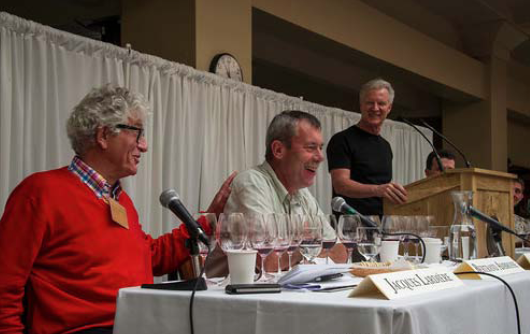
Photo by Andrea Johnson
Comments about the four wine regions discussed in this seminar and the tasting notes:
Chambolle-Musigny The wines show early accessibility. They are the most feminine wines in the Côte
d’Or, yet have extraordinary longevity. The wines can stay at their peak for decades.
2008 Domaine Lécheneaut Chambolle-Musigny
Approximate retail $49. From six different parcels in
Chambolle-Musigny. Aged 18 months in 40% new French oak.
·
Red fruits are featured, particularly strawberry,
with a flourish of spice. Will continue to improve in the bottle.
2008 Domaine Lécheneaut Chambolle-Musigny 1er Cru
Approximate retail $70. A blend of two vineyards.
Aged 18 months in 75% new French oak, otherwise vinified identically to the Chambolle-Musigny.
·
A clear step
up in quality. More aromatic featuring deep red fruits and spice, mild tannins, and some length on the finish.
An impressive wine.
Nuits-Saint-Georges 40 1er crus, no grands crus. Numerous clos (enclosed by wall) and monopole
(one owner) vineyards. Vignerons are trying to make the wines softer and more accessible, yet capable of
aging a long time. The wines are typically ready in 10-15 years now.
Echézeaux 11 different climats. One of largest grands crus in Burgundy. Terroir varies greatly within the
vineyard. Wines tend to be “sneaky,” that is, they seem to go away and then come back.
2008 Maison Ambroise Echézeaux Grand Cru
Approximate retail $110. Aged 18 months in 100% new
French oak. Unfined and unfiltered. Surprisingly good vintage for this wine.
·
Nicely perfumed with notes of
black cherries, rose petals and spice, finishing with intense dark fruits. Full-bodied with firm tannins and
impressive length. Quite approachable.
2010 Maison Ambroise Echézeaux Grand Cru
Approximate retail $200. Aged 18 months in 100% new
French oak. Unfined and unfiltered.
·
Bright aromas of ripe black cherries. Richly endowed with excellent
minerality and tension, less tannin than in 2008, finishing long and classy. A great wine in the wings.
Gevrey-Chambertin Contains 9 of the 24 grands crus in the Côte de Nuits. The wines are rich, firm and
concentrated, masculine in character in contrast to the feminine nature of wines from Chambolle-Musigny.
2006 Maison Louis Jadot Clos St-Jacques 1er Cru
Approx retail $110-135. 5 owners (Rousseau, Sylvia
Esmonin, Bruno Clair, Domaine Fourrier and Jadot). Clearly above all other 1er cru vineyards in Gevrey-
Chambertin and many feel deserving of grands cru status.
·
Rough and rustic at this stage and not very giving
aromatically. Medium depth of sweet, dark red fruits with noticeable oak. Needs another ten years at least.
Seminar: A Life in Wine: A Retrospective Tasting with Jacques Lardière
Host: Alder Yarrow
Born in 1948 in Vendée, France, Jacques Lardière decided as a youngster to become a winemaker. He
graduated with distinction from the school of Viticulture and Oenology of Alentours, in Mâcon, and pursued
research in the biology of aromas and bacteria under Professor Brechot of the Pasteur Institute and Jules
Chauvet who was worked his whole life on aromatic identification. In 1970, Jacques Lardière joined Maison
Louis Jadot in the capacity of assistant oenologist under Mr. André Gagey, then Managing Director. He was
appointed Technical Director in 1980 and became respected as one of France’s most brilliant, passionate and
inspired winemakers, and one of the preeminent figures in Burgundy. After 42 years, he is retiring from Maison
Louis Jadot.
During this seminar, Jacques Lardière spoke more of passion and obscure forces which shape terroir than
specifics of his wines. With arms constantly in motion and possessed by unbridled enthusiasm, it matters little
that one cannot understand much of what he says. His Franglais is utterly charming and with his repetitive
mantra of, “You see, it is important,” one cannot help but to be mesmerized. I was so enthralled by Mr.
Lardière, I failed to record tasting notes. Suffice it to say, it was an incredible lineup of wines with all the wines
showing terroir-specific character.
Jacques Lardière brought a number of wines from Jadot’s library for this tasting:
1989 Maison Louis Jadot Bonnes Mares Grand Cru
1991 Maison Louis Jadot Gevrey-Chambertin Clos St-Jacques 1er Cru
2001 Maison Louis Jadot Beaune Clos des Ursules 1er Cru
2002 Maison Louis Jadot Volnay Clos de la Barre 1er Cru
2004 Maison Louis Jadot Chambolle-Musigny Les Baudes 1er Cru
2005 Maison Louis Jadot Savigny Les Beaune Clos des Guettes 1er Cru
Seminar: Icons of the New World: The Pinots of Hanzell & Adelsheim
Panelists
David Adelsheim, Founder and President, Adelsheim Vineyard
Michael McNeil, Winemaker, Hanzell Vineyards
Host
John Haeger
David and Ginny Adelsheim dreamed of planting a vineyard in Oregon after returning from a summer in 1969 in
Europe. In 1971 they acquired a field in the Chehalem Mountains in what was at the time an unproven
viticultural area and Adelsheim Vineyard was born. The following year, they planted 15 acres of Pinot Noir,
Chardonnay, Pinot Gris and Riesling using the assistance of friends and family. The vineyard was named
Quarter Mile Lane. David knew nothing about winemaking initially and spent a year with David Lett and a year
in Burgundy to learn the craft. The first commercial release of 1,300 cases of Pinot Noir, Chardonnay and
Pinot Gris was 1978, produced from purchased grapes. It wasn’t until 1981 that the first estate wines
appeared from the 1979 vintage. The initial winery was established in 1982 adjacent the Adelsheim’s home. A
19-acre site was leased across the road from the original estate vineyard at Quarter Mile Lane in 1989 and
became known as Bryan Creek Vineyard. Co-owners Jack and Lynn Loacker joined Adelsheim Vineyard in
1994, and began planting a 120-acre site on Ribbon Ridge known as Ribbon Springs Vineyard, the source of
much of the winery’s Pinot Noir since 1998. A modern winery with underground barrel storage was built at the
52-acre site known as Calkins Lane Vineyard in 1997, and an extensive addition was completed in 2008.
Today, the Adelsheim Vineyard estate encompasses 190 acres.
David Adelsheim remains an iconic figure in Oregon wine and has participated as a respected spokesperson
on important issues in the Oregon wine industry over the years. He is considered one of the true pioneers of
Oregon wine along with Richard Sommer, Charles Coury, David Lett (who was a close friend of Adelsheim’s),
Dick Erath, and Richard Ponzi. Unlike all the other pioneers who came from California, Adelsheim grew up in
Portland. He remains quiet and unassuming (he considers himself a latecomer and not in the lofty category of
the original pioneers), with a charming sense of humor which belies his considerable achievements. When I
have a question about Oregon wine and viticulture, David always has the answer and is uncommonly patient
and generous with his vast store of information. (See an early photo of a bearded David Adelsheim in the
archival photo above: he is kneeling in the lower right).
David Paige has been the winemaker since September of 2001, and Chad Vargas has been the viticulturist
since 2006. The winery’s labels have recently undergone modernization.

Hanzell Vineyards was one of California’s first boutique wine estates. Diplomat and president of Crown
Zellerbach, James D. Zellerbach, and his wife, Hana, became fond of Burgundy wines when he served as an
American ambassador to Italy. The couple purchased land on Sonoma Mountain just one mile north of
Sonoma Plaza and built a winery of redwood and local stone fashioned after Burgundy’s Clos de Vougeot.
They planted their first vines in 1953: Chardonnay (Wente clone) and Pinot Noir (Martin Ray clone). The
Martin Ray material was reputedly from a clandestine late night raid on a Napa Valley vineyard by Hanzell’s
initial winemaker, Brad Webb. Over the years, the vines have mutated and new vines propagated from them
have created a distinct Hanzell selection. The Ambassador’s Vineyard, planted in 1953, is the oldest
continually producing vineyard of Pinot Noir and Chardonnay in North America.
Winemaking at Hanzell was Burgundian from the beginning and Zellerbach was among the first in California to
use French oak barrels. In addition, Zellerbach designed the first temperature-controlled stainless steel
fermentation tanks. He was also the first to use nitrogen in bottling. Small amounts of wine were sold starting
in 1957, but 1965 was the first full-scale commercial vintage.
Bob Sessions followed Brad Webb and was the general manager and winemaker at Hanzell for 33 years. He
retired in 2005, was briefly replaced by Michael Terrien, who was followed by the current winemaker, Michael
McNeill. Despite winemaker changes, the house style has remained constant.
Today, Hanzell Vineyards consists of 46 acres, producing 4,500 cases of 100% estate-bottled wine from the
estate vineyards. For the past 30 years, Alexander de Brye has owned Hanzell. The Chardonnays have been
the star of this winery but the Pinot Noirs have their advocates as well and both varietals age extremely well.
The wines in the seminar:
1987 Adesheim Vineyard Oregon Pinot Noir
The last vintage for David Adelsheim as winemaker. First year
adjusted crop load; before that, vintners in Oregon hadn’t really thought of trying to adjust crop load for quality.
A large vintage marked by rain and then heat near the end. Grapes were picked in early September.
·
Mild
bricking of the rim in the glass. Very shy but pleasing aromas of cherries, mint and buttered brioche.
Surprising well-flavored with a tasty core of cherry fruit and a note of teriyaki. The tannins have fully melded,
but the wine retains a good cut of acidity. Amazing!
1993 Adelsheim Vineyard Seven Springs Vineyard Pinot Noir
Adelsheim was the first to make a vineyarddesignated
bottling from this vineyard. Pommard based. From a cool vintage.
·
Aromas of dried fruit,
mushrooms and earth. Light in weight featuring dark red berry fruit and hints of animale and leather. The
tannins have fully integrated. Enjoyable.
2005 Adelsheim Vineyard Quarter Mile Lane Vineyard Pinot Noir
Longer maceration performed before and
after fermentation leading to more tannin for aging. This wine should age 20+ years. Fruit from this vineyard
makes up a large percentage of the Adelsheim Reserve bottling (since 1988).
·
Black cherry is the calling card
for this wine which has excellent fruit purity. Very soft in the mouth and easily approachable now. Finishes
with a black cherry flourish with staying power. Excellent.
1986 Hanzell Vineyards Sonoma Valley Pinot Noir
Warm vintage. 20% stems were added back. Aged 24
months in oak.
·
Dark reddish-purple color in the glass. Still vibrant on the nose with aromas of dark stone fruit
and berries with a hint of chocolate mint. Plenty of fruit remains backed by persistent, firm tannins. Dark, ripe
fruit is accented by notes of earth and mushroom. Amazing!
1994 Hanzell Vineyards Sonoma Valley Pinot Noir
Whole cluster fermentation started in the late 1980s and
continued until 2005. Current winemaker, Michael McNeill is bringing back some whole cluster as he feels it
adds an interesting floral and spice box character to the wines. The winery tries to make changes in
winemaking very slowly over time to maintain a consistent style. This wine has 20% whole cluster.
·
Aromas of
grass and straw, showing a medium weight core of dark red fruit backed by firm, dry tannins, finishing very dry,
even slightly astringent. Good.
2003 Hanzell Vineyards Sonoma Valley Pinot Noir
14.7% alc.. Crushed before de-stemming. Aged in 57%
new French oak.
·
Very savory with aromas of dark berry jam and herbs. Earthy and spicy black raspberry and
black cherry flavors wrapped in moderately firm, dry tannins, finishing with an herbal note. Good.
University of Pinot: Climatology 201
Coolest of the Cool
Panelists
Cyril Audoin, Domaine Charles Audoin
Patrice Ollivier, Domaine Fougeray de Beauclair
Rob Stuart, R. Stuart & Co. (Oregon)
Andy Peay, Peay Vineyard (California)
Blair Walter, Felton Road (New Zealand)
Moderator
Jason Lett, The Eyrie Vineyads
The University of Pinot was a new element to the IPNC. Nine different afternoon small-format seminars were
held. I attended Coolest of the Cool.
It has been well established that Pinot Noir produces the best fruit when it is planted in a climate with a long,
cool growing season. This often means winegrowing on the edge since the grapes ripen just as the fall rains
loom on the horizon. The panelists gave their take on the benefits of growing Pinot Noir at the climatic edge.
Pinot Noir has the narrowest band of climate temperature to fully express itself: 2 degrees. An average
growing temperature of 14 to 16 degrees Celsius (57 to 60.8 degrees Fahrenheit) is ideal. Once the Pinot Noir
vine is grown outside this narrow band of temperatures, it becomes unexpressive.
The wines:
2009 Domaine Charles Audoin Marsannay “Clos de Jeu”
Charles assumed the reigns at this property in
1972 with his wife Marie-Francoise, an enologist. Their son, Cyril, joined the Domaine in 2000 after
apprenticing in various wineries around the world. Located within the commune of Marsannay-la-Côte, the
estate extends over 35 acres, producing 14 different wines, primarily from Marsannay. There are great valuepriced
wines to be found from Marsannay and this wine is a fine example. Maximum 50% new oak.
·
Intense
aromas and flavors of cherries baked by bright acidity and balanced tannins. A delicious, easily approachable
and friendly wine that aims to please. Very good.
2009 Peay Vineyards Scallop Shelf Estate Sonoma Coast Pinot Noir
From a vineyard 4 miles inland from
the Pacific Coast, planted in 1998 to 15 clones at an elevation of 600 to 800 feet. 4 cuvèes are produced from
the 35-acre estate vineyard. This wine is 40% Pommard, with lesser amounts of Dijon 115, 777, and Swan
selection. Aged in 30% new French oak from several coopers.
·
An stunning wine displaying enticing aromas of
spiced black raspberry and blackberry fruits holding intensity over time in the glass. Delicious core of dark
berry fruits delivering layers of flavor, finishing with impressive length. A tea and soy accent add interest. The
tannins are supple and the balance is spot-on. Exceptional.
2010 Felton Road Block 5 Central Otago Pinot Noir
The Central Otago growing region is quite dry with only
14” to 16” of rain annually. The vineyards sit at 650 to 1000 feet and are surrounded by the Southern Alps
which shelters them. There is an exceptionally high level of UV radiation. Temperatures cool off dramatically at
night from a daytime high in the 80s to a nighttime low in the 30s.
·
Very fruity aromatics. A plethora of wellspiced
dark berries make a statement on the palate, buttressed by soft tannins, balanced acidity and a
generous fruit-driven finish. Needs more time in bottle, but hard to resist now. Exceptional.
Wines tasted at IPNC that I Highly Recommend
Many of these wines were tasted only briefly, but created an impression, even an emotion. I hope you have the
opportunity to grab a few of these beauties for your personal cellar. These wines are additional to the ones
reviewed in this issue on the previous pages.
Burgundy
2010 Domaine Huber-Verdereau Volnay “Les Robardelles”
2010 Domaine Fougeray De Beauclair Fixin Clos Marion
2009 Domaine Marc Roy Gevrey Chambertin Clos Prieur
2006 Marquis d’Angerville Volnay Clos Des Ducs 1er Cru
2002 F. Magnien Chambertin Clos de Beze
Chile
2009 Kingston Family Vineyards Alazan
Canada
2009 Quail’s Gate Reserve Okanagan Valley Pinot Noir
California
2010 B. Kosuge Hirsch Vineyard Sonoma Coast Pinot Noir
2010 Red Car Heaven & Earth Bohemian Vineyard Sonoma Coast Pinot Noir
2009 Freeman Akiko’s Cuvée Sonoma Coast Pinot Noir
2009 Lincourt Lindsay’s Sta. Rita Hills Pinot Noir
2009 Hanzell Vineyards Sonoma Mountain Chardonnay
2008 Paul Lato Solomon Hills Vineyard Santa Maria Valley Pinot Noir (Magnum)
Oregon
2010 Anne Amie Winemaker’s Selection Willamette Valley Pinot Noir
2010 Bergström Winery The Bergström Vineyard Pinot Noir
2010 Evesham Wood Le Puits Sec Eola-Amity Hills Pinot Noir
2010 Luminous Hills Estate Yamhill-Carlton District Pinot Noir
2009 Brooks Janus Willamette Valley Pinot Noir
2009 Cornerstone Willamette Valley Pinot Noir
2009 Et Fille Wines Kalita Vineyard Yamhill-Carlton District Pinot Noir
2009 Hyland Estates Estate McMinnville Pinot Noir
2009 Ilahe Vineyards Reserve Willamette Valley Pinot Noir
2009 Stoller SV Estate Dundee Hills Pinot Noir
2008 Brooks Rastaban Willamette Valley Pinot Noir
Photo by Andrea Johnson
Pinot Noir IQ Test
In keeping with the educational theme of this year’s IPNC, I offer you a Pinot Noir IQ Test. The answers are on
the final page of this issue and can be found in many issues of the PinotFile and wine reference books. Some
questions are basic while others are rather obscure and deserve extra credit. Sit down with a good glass of
Pinot and see how many of the 50 questions you can answer correctly (answers are on the last page of this issue).
1. The approximate number of days from flowering to harvest for Pinot Noir is:
a. 50
b. 100-110
c. 125
d. 145-150
2. Chaptalization of Pinot Noir is legal in all the following regions except:
a. Burgundy
b. Oregon
c. California
d. Germany
3. All the following statements are true except:
a. Pinot Noir was called noirien long before the word pinot appeared
b. Pinot was initially often spelled pynos or pineau
c. The word noir comes from the fact that the juice of the Pinot Noir grape is midnight blue
d. Pinot is so-named because its cluster resembles a pine cone in shape
4. The highest resveratrol content in Pinot Noir comes from what wine region?
a. Okanagan Valley of Canada
b. Oregon
c. Australia
d. South America
5. Pinot Noir Blanc is:
a. A genetic mutation of Pinot Noir
b. A white wine produced from unripe Pinot Noir grapes
c. A white wine produced from Pinot Noir by pressing grapes after harvest to avoid skin contact with the
juice
d. None of the above
6. With Pinot Noir, fruit set is typically around:
a. 15%
b. 30%
c. 50%
d. 70%
7. “Hens and chicks” (millerandage) is a fruit set disorder that affects Pinot Noir. Which statement is true?
a. Both full size and small berries in the same cluster
b. Higher than normal aborted berries
c. Parts of the cluster turn yellow or brown
d. Large cluster with small berries
8. Pinot Noir is the one of the genetic parents of all except:
a. Chardonnay
b. Melon
c. Pinot Gris
d. Aligoté
9. The recommended serving temperature for Pinot Noir is:
a. 70º-72º
b. 65º-70º
c. 58º-63º
d. 54º-57º
10. Which of the following statements about Pinot Noir are true?
a. Oregon has more extreme vintage variation than Burgundy
b. The alcohol percentages are significantly lower in Oregon than Burgundy
c. Oregon Pinot Noir has limited age ability
d. In the past decade, Burgundy has been warmer than Oregon in every year but one
11. All the following statements about Pinot Noir are true except:
a. It is a shy-bearing variety
b. Pinot Noir berries have thin skin
c. Anthocyanin pigments that give Pinot Noir its color are present in less than half the quantity found in Syrah
d. Individual berries tend to be very large
12. The key to quality Pinot Noir production in California:
a. Maritime fog and breezes
b. Limestone soils
c. Volcanic soils
d. High elevation
13. Who said the famous line, “God made Cabernet Sauvignon, whereas the devil made Pinot Noir.”
a. Allen Meadows
b. Robert Parker, Jr.
c. Robert Finigen
d. André Tchelistcheff
14. Pierce’s Disease:
a. Stunts grapevines but is not fatal
b. Is secondary to a fungus
c. Is transmitted by the blue-green sharpshooter
d. Is not found in the Santa Cruz Mountains AVA
15. In Oregon:
a. Almost 2/3 of the vineyards are own-rooted
b. Whole cluster fermentation is never used
c. The statewide yield for Pinot Noir is more than 4 tons per acre
d. 75% is the minimum requirement for varietal labeling of Pinot Noir
16. Two significant growers of Pinot Noir in the Arroyo Grande AVA of California are:
a. Laetitia and Talley Farms
b. Edna Valley Vineyards and Chamisal Vineyards
c. Byron and Kenneth Volk
d. Estancia and Morgan
17. Bob Sessions produced age worthy Pinot Noir and Chardonnay for 28 years at which California winery?
a. Saintsbury
b. Hanzell Vineyards
c. Porter Creek
d. Mount Eden Vineyards
18. The book, “The Heartbreak Grape,” is about which iconic California winemaker known for Pinot Noir?
a. Jeffrey Patterson
b. Richard Sanford
c. Josh Jensen
d. Burt Williams
19. Which wine region has the most Pinot Noir under vine?
a. Willamette Valley, Oregon
b. California Coast
c. Cote d’Or
d. Central Otago, New Zealand
20. When Burt Williams left Williams Selyem in 1997 following the sale of the winery, he planted a vineyard in
Anderson Valley in 1999 named:
a. Bearwallow
b. Maggie Hawk
c. Skyline Ranch
d. Morning Dew Ranch
21. All the following are AVAs in the northern Willamette Valley except:
a. Ribbon Ridge
b. Umpqua Valley
c. Dundee Hills
d. Yamhill-Carlton District
22. The “punt” in Pinot Noir wine bottles:
a. Is a deep indentation in a bottle’s butt
b. Is necessary to diffuse pressure
c. There mainly for tradition
d. 1 & 3 are correct
23. Which North American Pinot Noir has “cult” status in Japan?
a. Calera Wine Company
b. Williams Selyem
c. Beaux Frères
d. Domaine Serene
24. Small plantings of Pinot Noir are in which of the following wine regions of California?
a. Yorkville Highlands
b. Spring Mountain District of Napa County
c. Malibu
d. All the above
25. The oldest continuously producing Pinot Noir vineyard in California is:
a. Sanford & Benedict Vineyard, Sta. Rita Hills
b. Mount Eden Vineyards, Santa Cruz Mountains
c. Rochioli West Block, Russian River Valley
d. Ambassador’s Vineyard at Hanzell Vineyards, Sonoma Valley
26. The first person to plant Pinot Noir in modern times on the true Sonoma Coast was:
a. David Hirsch
b. Ehren Jordan
c. Steve Kistler
d. Mick Bohan
27. Wineries producing Pinot Noir in California during the 1970s include all the following except:
a. Caymus
b. Heitz
c. Stony Hill
d. Freemark Abbey
28. All the following Oregon producers have biodynamic vineyards certified by Demeter except:
a. Cooper Mountain Vineyards
b. Maysara Winery
c. Shea Wine Cellars
d. Beaux Frères Vineyards & Winery
29. All the following are second label Pinot Noirs except:
a. Chausseur-Cazal
b. Paul Hobbs-Crossbarn
c. Carabella-Plowbuster
d. Ponzi-Jezebel
30. Gary Farrell has made wine for all the following Pinot Noir producing wineries except:
a. J. Swan
b. Davis Bynum
c. Rochioli
d. Alysian
31. All the following statements are true except:
a. Alsace was the first region in the world to do varietal labeling
b. In California, a vineyard-designated Pinot Noir must contain 95% of grapes from the named vineyard
c. In American, Pinot Noir designated wines must contain 60% Pinot Noir if named on the label
d. In Oregon, 90% of the grapes must be the varietal named on the label.
32. The first to plant Pinot Noir in Oregon was:
a. Charles Coury
b. Richard Sommer
c. David Lett
d. Dick Erath
33. All the following wineries operate within the Eola-Amity Hills AVA except:
a. Evesham Wood
b. Bethel Heights
c. St. Innocent
d. Coeur de Terre
34. The winery with the largest acreage of Pinot Noir vines in the California Coast is:
a. Castle Rock
b. Buena Vista
c. Kendall-Jackson
d. Martinelli
35. Merry Edwards has made Pinot Noir for all the following wineries during her long career except:
a. Mount Eden Vineyards
b. Matanzas Creek
c. Pellegrini Family
d. Robert Stemmler
Extra Credit
1. In the book, ‘Sideways,’ Jack buys a bottle of Pinot Noir and exclaims, “Lovely, big, gamy, almost irreverent
for a Pinot. I like it. A perfect beginning to this week-long adventure.” What was the wine?
a. 1999 Sanford La Rinconada Sta. Rita Hills Pinot Noir
b. 1998 Foxen Bien Nacido Vineyard Sta. Rita Hills Pinot Noir
c. 1999 Longoria Fe Ciega Vineyard Sta. Rita Hills Pinot Noir
d. 2002 Sea Smoke Botella Sta. Rita Hills Pinot Noir
e. 1992 Byron sparkling wine
2. Physicians who founded Willamette Valley Pinotcentric wineries include all the following except:
a. Joe Campbell - Elk Cove Vineyards
b. John Bergström - Berström Wines
c. Donald Olson - Torii Mor Winery
d. Mauricio Collada, Jr. - Cubanismo Vineyards
e. John Paul - Cameron Winery
3. All the following California wineries have produced Pinot Noir from Shea Vineyard in Oregon except:
a. Auteur
b. Sine Qua Non
c. Arista Winery
d. Pali Wine Company
e. Loring Wine Company
4. The smallest AVA in the United States with Pinot Noir plantings and one of the few with one owner is:
a. Green Valley
b. Bennett Valley
c. Ribbon Ridge
d. Cole Ranch
e. Redwood Valley
5. The first California Pinot Noir to sell for at least $100:
a. Paul Hobbs 2001 Cuvée Augustina Hyde Vineyard Carneros Pinot Noir
b. 2005 Kistler Bodega Headlands Cuvée Elizabeth Pinot Noir
c. Domaine Serene 2003 Monogram Oregon Pinot Noir
d. Williams Selyem 1991 Summa Vineyard Sonoma Coast Pinot Noir
e. Williams Selyem 1996 Precious Mountain Sonoma Coast Pinot Noir
6. 1964 was an important year in Pinot Noir history. All the following are true except:
a. The Bacigalupi family planted Pinot Noir on Westside Road in the Russian River Valley
b. David Bruce, M.D., bonded his namesake winery in the Santa Cruz Mountains
c. Stanley Hoffman, M.D. planted the only Pinot Noir at the time in the Paso Robles area
d. Uriel Nielsen and Bill De Mattei planted Pinot Noir at Nielsen Vineyard, the first commercial vineyard
in Santa Barbara County
e. Martin Ray released his first Pinot Noir from what is now Mount Eden Vineyard
7. Rochioli’s first wines were produced under which label?
a. Hacienda del Rio
b. Davis Bynum
c. Fenton Acres
d. Wines by Joe
e. Russian River Valley Vineyards
8. All the following are true regarding Dehlinger’s Octagon block of Pinot Noir except:
a. Planted to Pommard selection
b. Planted to Swan selection
c. Is named after the octagon house which sits in the center of the vineyard
d. The inaugural vintage of Octagon block Pinot Noir was 1994
e. Consists of 3.5 acres
9. Which of the following wineries has the credo, “Produce no wine with less character than yourself”
a. Hanzell Vineyards
b. Cristom Vineyards
c. The Eyrie Vineyards
d. Kalin Cellars
e. Windy Oaks Vineyard & Winery
10. The largest single purchaser of grapes from Bien Nacido Vineyard is:
a. Byron
b. Paul Lato
c. Twomey
d. Foxen
e. Au Bon Climat
11. All the following are true about Patricia Green of Patricia Green Cellars in Oregon except:
a. Her prior career was in forest management and reforestation
b. Previously worked at Torii Mor Winery
c. Bought former Autumn Wind property on Ribbon Ridge with partner Jim Anderson
d. Produced a Pinot Noir from California’s Hirsch Vineyard in California
e. Most of vineyards from which Green sources fruit are planted to Dijon clones
12. The most expensive North American Pinot Noir on the market today (release price) is:
a. 2006 Marcassin, Marcassin Vineyard Somona Coast Pinot Noir
b. 2010 J. Rochioli West Block Russian River Valley Pinot Noir
c. 2008 Domaine Serene Monogram Oregon Pinot Noir
d. 2009 Paul Hobbs UV Vineyard Sonoma Coast Pinot Noir
e. 2010 Patricia Green Cellars “Notorious” Willamette Valley Pinot Noir
13. The newly approved Fort Ross-Seaview AVA on the Sonoma Coast includes vineyards from all the
wineries listed except:
a. Hirsch Vineyards
b. Marcassin
c. Pahlmeyer
d. Belle Glos
e. Peter Michael
14. The “Barefoot” label, a highly successful line of wines including Pinot Noir owned by E. & J. Gallo, was
originally owned by what iconic California winery owner?
a. Davis Bynum
b. Gary Farrell
c. Tom Dehlinger
d. Ted Lemon
e. Tom Rochioli
15. The first California winery to establish a reputation for vineyard-designated Pinot Noir from purchased fruit:
a. Acacia, Carneros
b. Buena Vista, Carneros
c. Saintsbury
d. Byron
e. Siduri
Pinot Briefs
Alma Rosa Winery Bankruptcy This news shocked me, much like the news several years ago that
Richard Sanford had lost his namesake winery. Richard and Thekla filed for Chapter 11 bankruptcy on July 27,
attributing the decision to the effects of the global recession of 2008 and the low-yielding crop levels that
followed. Sanford was inducted into the Vintners Hall of Fame this past February, and is one of California’s
most tireless promoters of Pinot Noir, appearing annually at many Pinot Noir and wine events. He is about the
nicest guy you would ever want to meet and I hold him in my highest respect. After 44 years in the business, he
deserves better. The future plan is to reorganize while the winery remains operational and the Buellton tasting
room remains open.
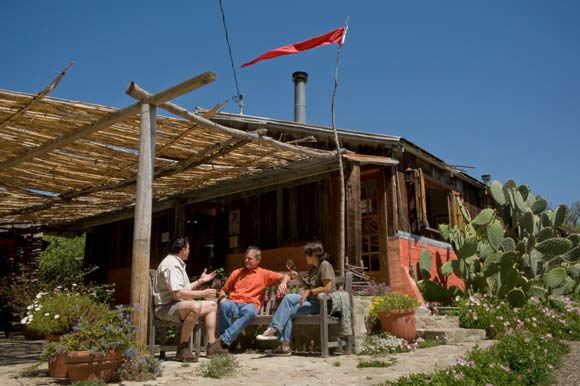
Resveratrol Therapy for Cardiac Patients The American Journal of Cardiology (August 1, 2012)
recently published a clinical trial (triple-blind, randomized-parallel, dose-response, placebo-controlled) involving
75 high-risk patients with diabetes, high cholesterol and one other cardiovascular risk factor. The resveratrol
supplement (8 mg for the first 6 months and 16 mg for the next 6 months) lowered multiple markers of
inflammation and fibrinolytic status in patients who were on statins for primary prevention of cardiac disease
and at high cardiac disease risk. Resveratrol may turn out to be an adjunct dietary therapy for the primary
prevention of cardiac disease and could compliment the gold standard therapy of statin drugs.
Bruliam Wines Acquires Two Sisters Vineyard Two Sisters Vineyard is a tiny planting in the
Russian River Valley of primarily Martini clone, consisting of just 499 Pinot Noir vines. Reportedly, the original
vines date to 1953 which would make it one of the oldest continuously producing Pinot Noir vineyards in
California (Hanzell’s Ambassador’s Vineyard was also planted in 1953 and this has been documented). The
new owners, Brian and Kerith Overstreet, are researching the history of the vineyard to verify the timing of the
original plantings. They expect to produce a Two Sisters Vineyard Pinot Noir in the 2012 vintage, totaling
100-150 cases. From 2000 to 2007, the fruit was used exclusively by Adrian Fog Winery
Reliability & Consensus of Experienced Wine Judges The Journal of Wine Economics
(May 2012) published a paper by Robert H. Ashton which considers the levels of reliability and consensus of
wine quality judgments of particular wine by the same judge, and consensus, which concerns the similarity of
judgments of a particular wine across judges. The reliability and consensus levels found in wine judging were
compared to those in six other fields: medicine, clinical psychology, business, auditing, personnel
management, and meteorology. In all fields, including wine judging, reliability is greater than consensus. Both
reliability and consensus are, on average, substantially lower in wine judging than in other fields, although
tremendous variability exists across judges in every field. Little support is found in this research for the idea
that experienced wine judges should be regarded as experts. Read the entire paper at Cambridge Journals
Online at www.cambridge.org.
Dogpatch Fills Void Left by Crushpad in San Francisco Dogpatch Wine Works, which is
located in a former canning factory in San Francisco on 3rd Street, offers wine hobbyists the opportunity to
make there own wine, offering services similar to what Crushpad originally offered, except commercial
services. The founders of Dogpatch, including Kevin Doucet, formerly worked at Crushpad, and the consulting
winemaker, Mike Zitzlaff, was the head of winemaking at Crushpad at one time. Pinot Noir grapes are
available from the Keller Estate on the Sonoma Coast in the 2012 vintage. Visit www.dpwineworks.com. (The
assets of Crushpad were recently acquired by new investors assembled by Castlegate Capital Advisors of
Tiburon, and they plan to find a new industrial space to revive Crushpad and lock in a custom vintner for the
2012 harvest. Some former Crushpad employees were retained. The business model will be changed to
hopefully make the operation profitable and attractive to hobbyists and commercial customers.)
Santa Maria Valley Wine Country Map A newly revised wine map and visitor brochure featuring
32 wineries with tasting rooms throughout Santa Maria Valley and Santa Barbara County, including information
on restaurants, caterers, hotels and shopping, is available at member locations and as a PDF download at
www.smvwines.com. Stay up to date with the latest Santa Maria Valley winery and culinary events at
www.smvwines.com/events/upcoming.
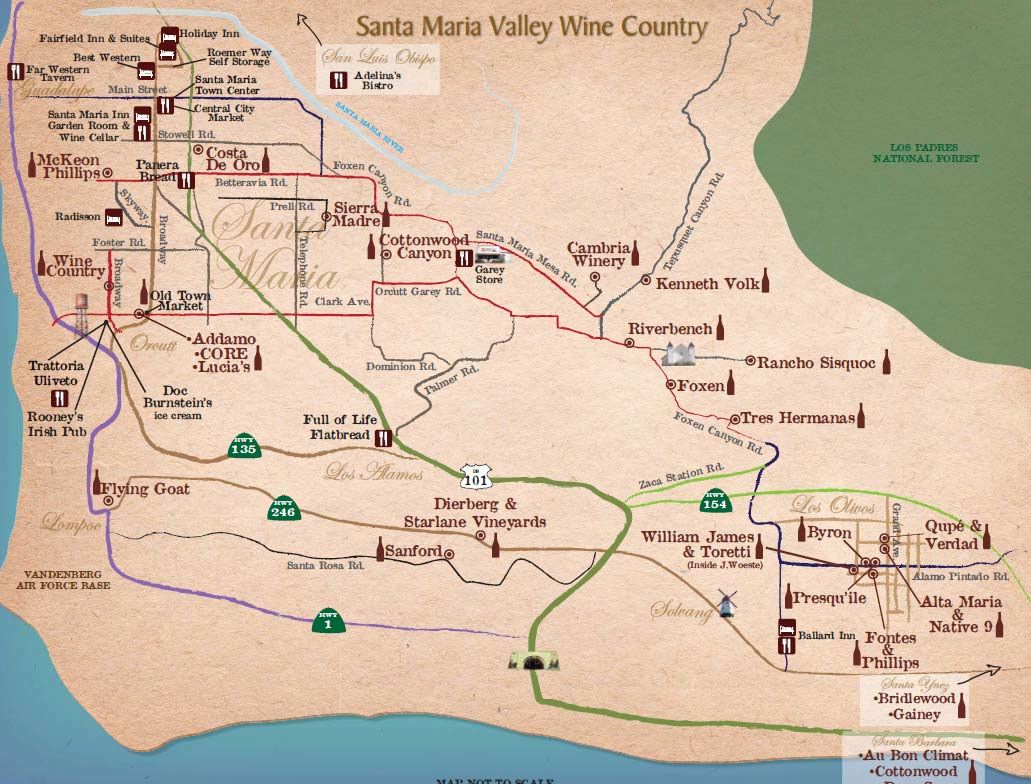
Popularity of Pinot Noir: Devil in Disguise? A recent post on BlogYourWine discussed the
popularity of Pinot Noir and how it is a concern for some wineries. It was pointed out that Jason Lett, owner of
The Eyrie Vineyards in Dundee Hills, Oregon, confirmed that Pinot Noir plantings were appearing on the fertile
valley floor of the Willamette Valley (Pinot Noir vineyards are typically on hillsides above 300 feet to avoid frost
and its consequences). We already know that California’s Central Valley has one-sixth the Pinot Noir acreage
of California’ Coastal Region, yet is now producing more tons of Pinot Noir annually. As long as there is a large
demand for inexpensive Pinot Noir offered by labels such as A to Z, Castle Rock and Mark West (and I don’t
see this changing in the future), there will be a demand for Pinot Noir grapes that can only be completely
satisfied by establishing large acreage in areas considered too warm or otherwise undesirable for growing
premium Pinot Noir, especially in vintages beset with low yields in coastal regions. Also, prices for premium
Pinot Noir grapes have risen to extremely high levels, in the range of $8,000 per ton in some cases in 2012,
which value-priced Pinot Noir producers obviously cannot shoulder. The only concerned wineries are those
premium quality producers who are locked into a price level necessary for profitability, and must complete with
the large volume Pinot Noir producers who are offering remarkably good Pinot Noir priced under $20, wines
that are a good fit for the burgeoning Millennial wine market.
Pinot on the River 100 small production Pinot Noir producers will participate in the 2012 Pinot On the
River Festival, held Sunday, October 21, 2012, on the Healdsburg Plaza in downtown Healdsburg. Many of
your favorite producers will be pouring, including Belle Glos, Benovia Winery, Couloir Wines, Davis Family
Winery, Donum Estate, Eric Kent Wines, Foursight Wines, Freeman Winery, J Winery & Vineyards, John Tyler
Winery, Kanzler Vineyards, Keefer Ranch, Littorai Winery, Papapietro Perry, Patz & Hall, Siduri, Talisman Wine,
Wren Hop and more. A special morning seminar, “A Morning with Ted Lemon of Littorai Wines," will be
available to the first 50 VIP ticket holders. Visit www.pinotfestival.com for tickets.
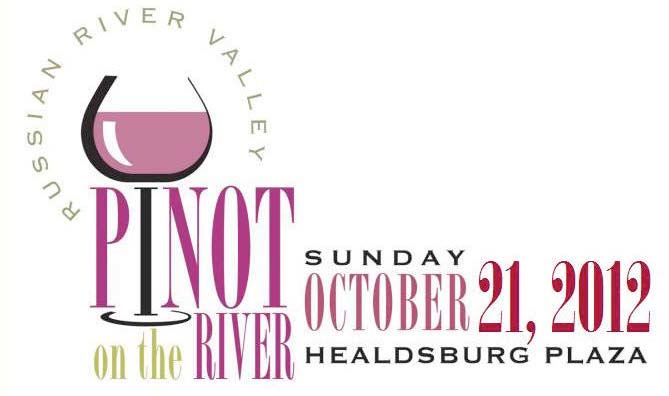
New Wine Books of Interest Naked Wine: Letting Grapes Do What Comes Naturally (Alice Feiring),
A Toast to Bargain Wines: How Innovators, Iconoclasts, and Winemaking Revolutionaries are Changing the
Way the World Drinks (George M. Taber), Wine Flavor Chemistry (Ronald J. Clarke and Jokie Bakker),
Creating Wine: The Emergence of a World Industry, 1840-1914 (James Simpson), and Drinking Diaries:
Women Serve Their Stories Straight Up (Caren Osten Gerszberg and Leah Odze Epstein)
Wine Ride in Oregon Bike Gallery of Portland, Oregon, has organized a September wine ride at Vista
Hills Winery. The ride is fully supported, approximately 30-40 miles of rolling terrain, and includes a gourmet
lunch, wine tasting, and bike poker. The event is limited to 100 riders and costs $65. 100% of the profits will
be donated to the Oregon Chapter of the Children’s Heart Foundation. Register for the rides at
www.bikegallery/wine-rides/.
Swedish Study Touts Moderate Drinking for Arthritis A study recently published in the
British Medical Journal, found that long-term moderate alcohol consumption reduces greatly the risk of
rheumatoid arthritis in women. Women who drank more than three glasses of alcohol per week were 37
percent less likely to develop rheumatoid arthritis (14 percent lower for those who drank one or two glasses per
week). No differences were found among wine, beer or liquor, although most of the women in the study
preferred wine or beer. Other prospective studies will be needed to confirm the results.
Donum Estate Adds Vineyards In recent years Donum Estate has added vineyards in the Russian
River Valley (Ten Oaks, Pommard clone) and Anderson Valley (inaugural release from the 2011 vintage). In
2013, the winery will plant 15 acres of Pinot Noir on the home ranch where current plantings are 22 years old.
Pommard will be added to the clonal mix at the Carneros site.
2012 Sonoma Wine Country Weekend Labor Day weekend (August 31-September 2),
MacMurray Ranch will host this 33rd annual event. Kate MacMurray will host a stroll through the historic
MacMurray Ranch property where 170 wineries will be pouring wine and over 60 local chefs will be offering
gourmet foods. The event was named one of the 10 Best Wine and Food Events in the United States by
Celebrated Living magazine. A never-before-seen exhibition of MacMurray family archives detailing ranch life
from the late 19th Century to today will be open. The exhibit will be displayed in the oldest structure on the
ranch, called the Prune Shed, referencing the principal Russian River Valley cash crop of the early 1900s. A
number of the programs are already sold out. Visit www.sonomawinecountryweekend.com for tickets.
Strange Carafe No 8 Etienne Meneau of Etienne Meneau Sculptures sent me a photo of the latest
stange carafe for sale. An edition of 12, it is available at 2500 euros + shipping. Visit www.the-strangedecanter.
blogspot.com.
Navarro 2011 Futures Navarro has already sold 60% of the small production of the 2011 Deep End
Pinot Noir as futures. Strong sales and less production means Navarro will have little or none to sell when the
wine is officially released a year from now. Three 750 bottles cost only $114 as futures (33% savings), six 750
bottles cost $216 (27% savings) and twelve bottles $408 (31% savings). Magnums are also available as
futures. Visit the website at www.navarrowine.com or call 800-537-9463. This is always a great wine!
Direct-To-Consumer Shipments According to data tracked by ShipCompliant and Wines & Vines
magazine, the dollar value of direct shipped wines was up 11.5 percent for the12-month period ending April
2012. The average price per bottle increased $1.11 to $37.69 and $30-plus wines saw the greatest increase in
volume shipped. Cabernet Sauvignon, Chardonnay and Pinot Noir accounted for 48 percent of varietal labelled
wine. The average bottle price for Oregon wines ($37) was slightly higher than for Sonoma County
wines ($36) and second only to Napa Valley wines ($56).
Belle Glos Growing Rapidly in Popularity According to the latest Wines & Vines (August 2012),
Belle Glos and Meiomi labels from Wagner brands (Caymus and Conundrum) grew faster than all other top 20
brands considering off-premise sales, showing a 175% increase in dollars and $3.1 million in 52-week sales.
Curtis Mann, director of client insights at the Symphony IRI Group, a Chicago-based market research firm,
said, “They are the hottest thing out there for Pinot Noir.”
Family Winemakers of California Tasting 2012 Sunday, September 9 (open to the public
3:00-6:00 and trade 1:00-6:00) and Monday, September 10 (open to trade only 2:00-6:00) the tasting will
showcase California’s small, family owned wineries at Fort Mason Center in San Francisco. Takeaway wine
sales available. Tickets at www.familywinemakers.org.
Southeast Wine Collective Opens in Portland Located in the Division-Clinton neighborhood, a
hub for the city’s emerging food and beverage culture, the Southeast Wine Collective was founded by Kate and
Thomas Monroe. The Collective, which opened in August 2012, is a urban winery providing premium custom
crush wine production to artisanal wineries, as well as a tasting bar and special events space. The Collective
is currently home to the Division Winemaking Company, Helioterra Wines, Vincent Wine Company and Bow &
Arrow Wines. Division Winemaking Company was founded in 2010 by Kate and Thomas Monroe and produce
sustainably farmed Pinot Noir, Gamay, Chardonnay and Rosé (www.divisionwinemakingcompany.com).
Helioterra is a small producer under the direction of winemaker Anne Ebenreitier Hubatch
(www.helioterrawines.com). Vincent Wine Company was founded by Vincent Fritzsche in 2009 with the goal of
producing Pinot Noir from local vineyards (www.vincentwinecompany.com). Bow & Arrow is owned by Scott
and Dana Frank who specialize in Pinot Noir, Gamay and Cabernet Franc (www.bowandarrowwines.com).
Dr. Konstantin Frank Winery turns 50 Dr. Konstantin Frank is an icon to winegrowers in the
Finger Lakes region of New York, much like Andre Tchelistcheff is to Californian winegrowers. He was one of a
small group of proponents who believed Vitus vinifera could be grown in the eastern United States. Frank’s
original 9-acre Pinot Noir vineyard was planted on a hillside bluff overlooking Keuka Lake’s western shore, just
up the road a few miles from Hammondsport. The clone apparently came to the United States from Europe
and now numbered 7 and designated the Dr. Frank clone. The oldest blocks of Pinot Noir were planted from
1959 to 1961, and are older than all California plantings still in production except the 1953 Ambassador’s
Vineyard at Hanzell Vineyards in Sonoma Valley. Dr. Frank’s Pinot Noir was chosen twice to be poured at the
International Pinot Noir Celebration. When he died in 1985 at the age of 86, the winery was left in the capable
hands of his son, Willy Frank. A celebration was held on July 1 to commemorate the 50th anniversary and 29
members of Dr. Frank’s family were in attendance. A rediscovered documentary about Dr. Frank filmed in the
1970s was shown. My photos below show the tasting room at Dr. Konstantin Frank Winery and the original
plantings of Pinot Noir (2008).
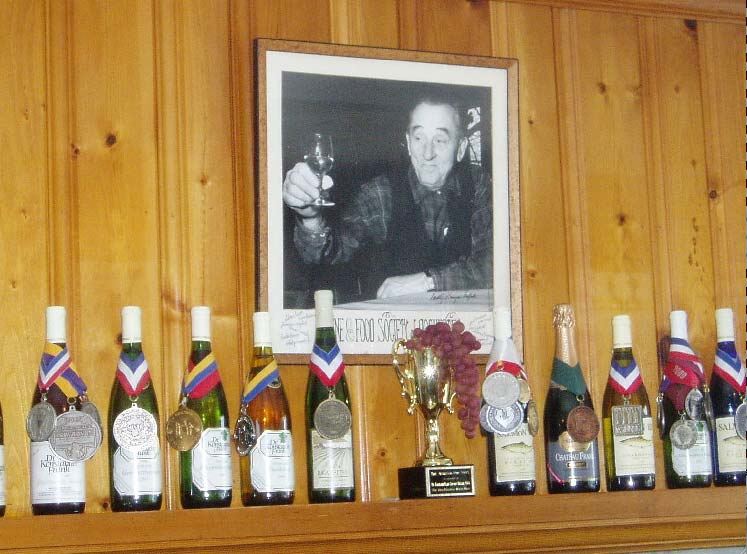
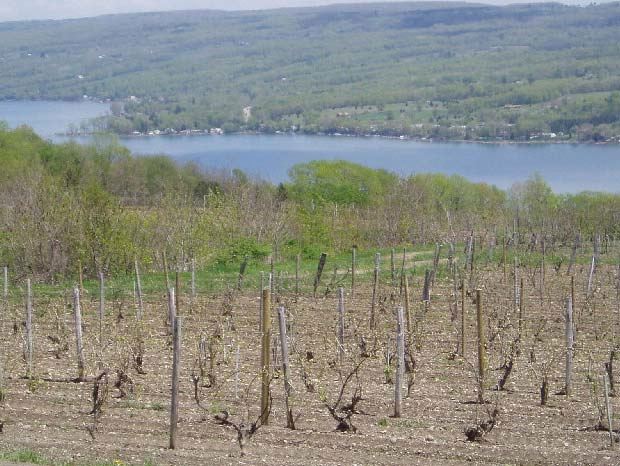
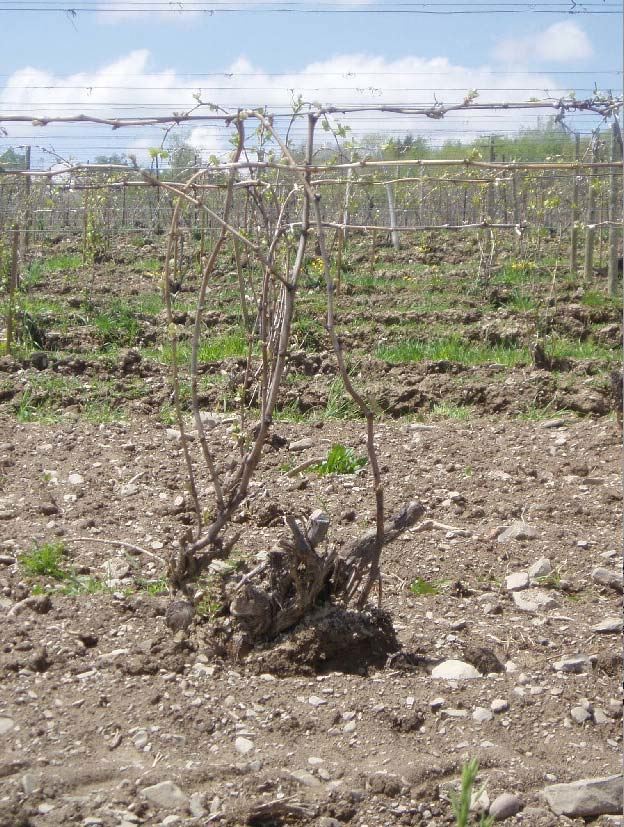
Pinot in the City 70 top Oregon wineries are bringing their wines to San Francisco on Thursday,
September 13, 2012, from 6:00 PM to 9:00 PM. The venue will be the Golden Gate Club at The Presidio.
Tickets are $65 at www.willamettewines.com. Ticket purchasers will be automatically entered in a drawing for
a luxury wine country getaway at The Allison Inn & Spa. A trade tasting will take place September 13 from
12:00 PM to 4:00 PM (contact emily@ekpmedia.com to attend the trade tasting).
Next Issue I spent a week after this year’s IPNC touring the Willamette Valley and tasting the wonderful
2010 vintage Pinot Noirs (and a few barrel samples of the equally fine 2011 vintage Pinot Noirs), and I will give
a full report in the next issue. Save your money, you are going to want these wines! The 2010 vintage is one
of the three best vintages EVER for Pinot Noir in Oregon!
Pinot Noir IQ Test Answers
1. b
2. c
3. c
4. b
5. c
6. b
7. a
8. c
9. c
10. d
11. d
12. a
13. d
14. c
15. a
16. a
17. b
18. c
19. b
20. d
21. b
22. d
23. a
24. d
25. d
26. d
27. c
28. c
29. d
30. a
31. c
32. b
33. d
34. c
35. d
Extra Credit
1. a
2. e
3. c
4. d
5. d
6. e
7. c
8. a
9. d
10. e
11. e
12. c
13. c
14. a
15. a
|
